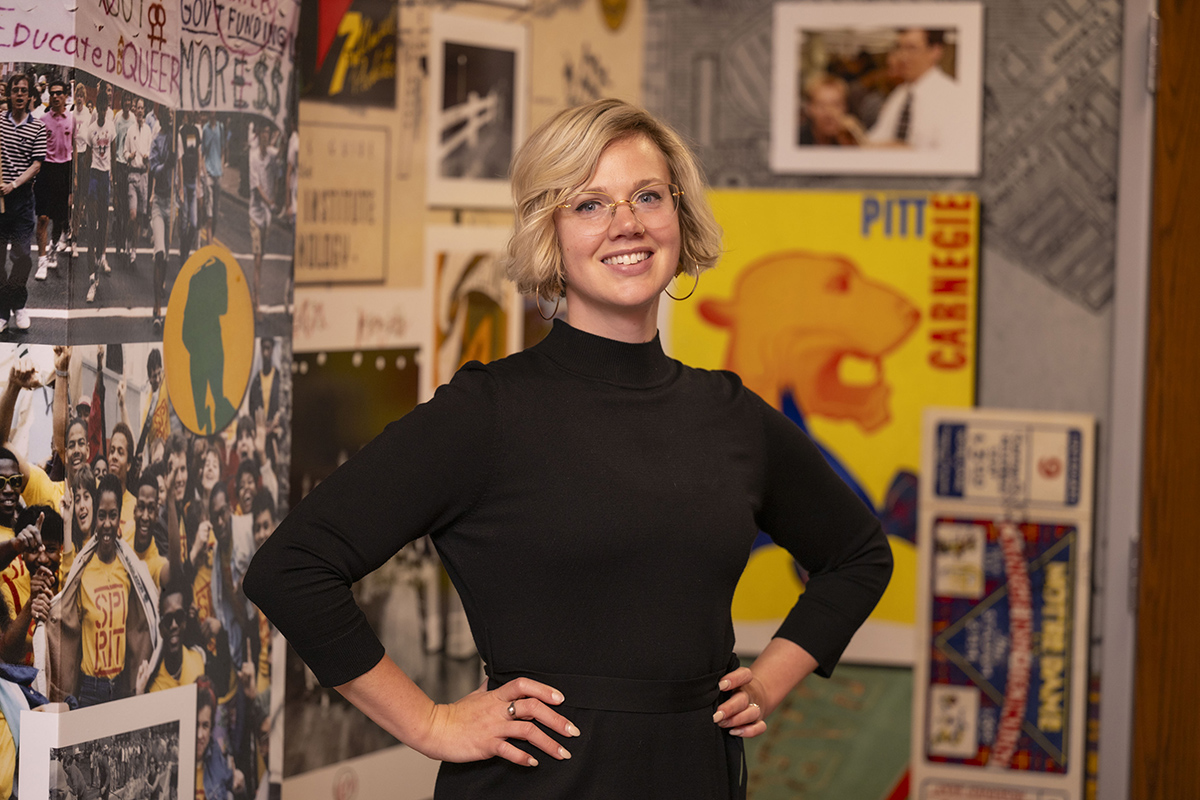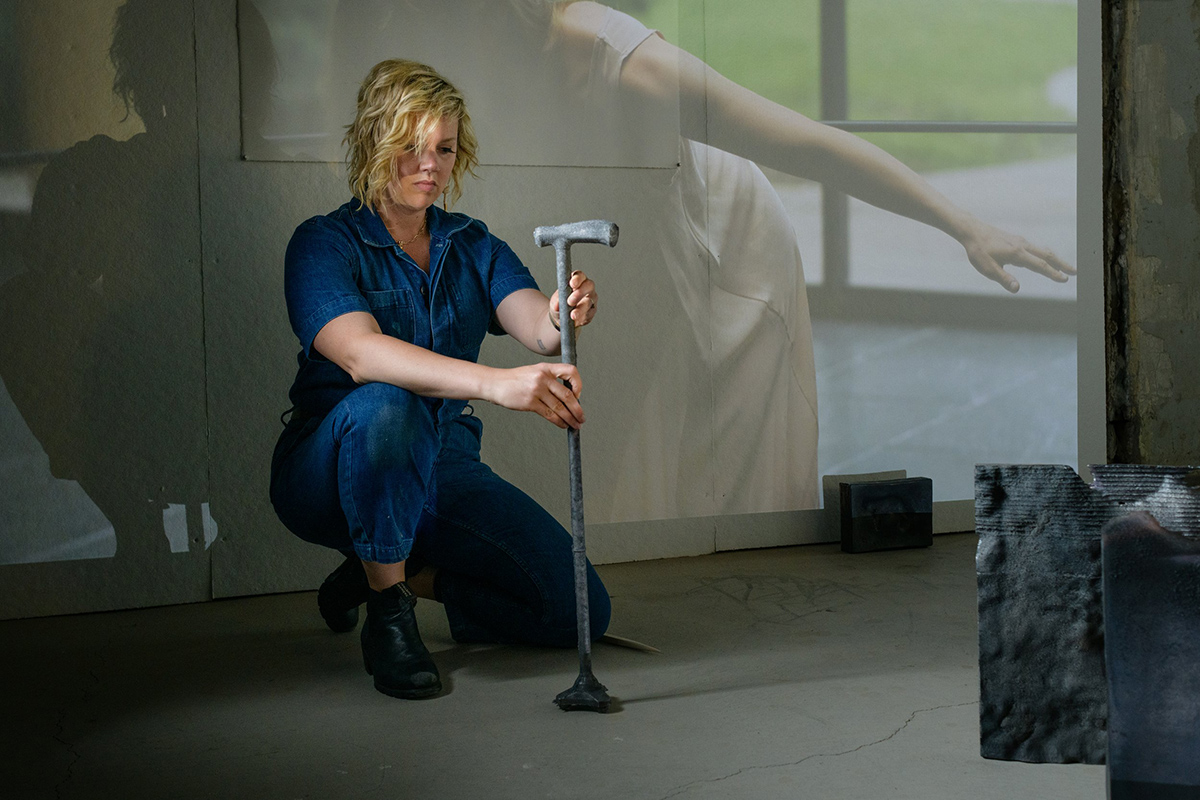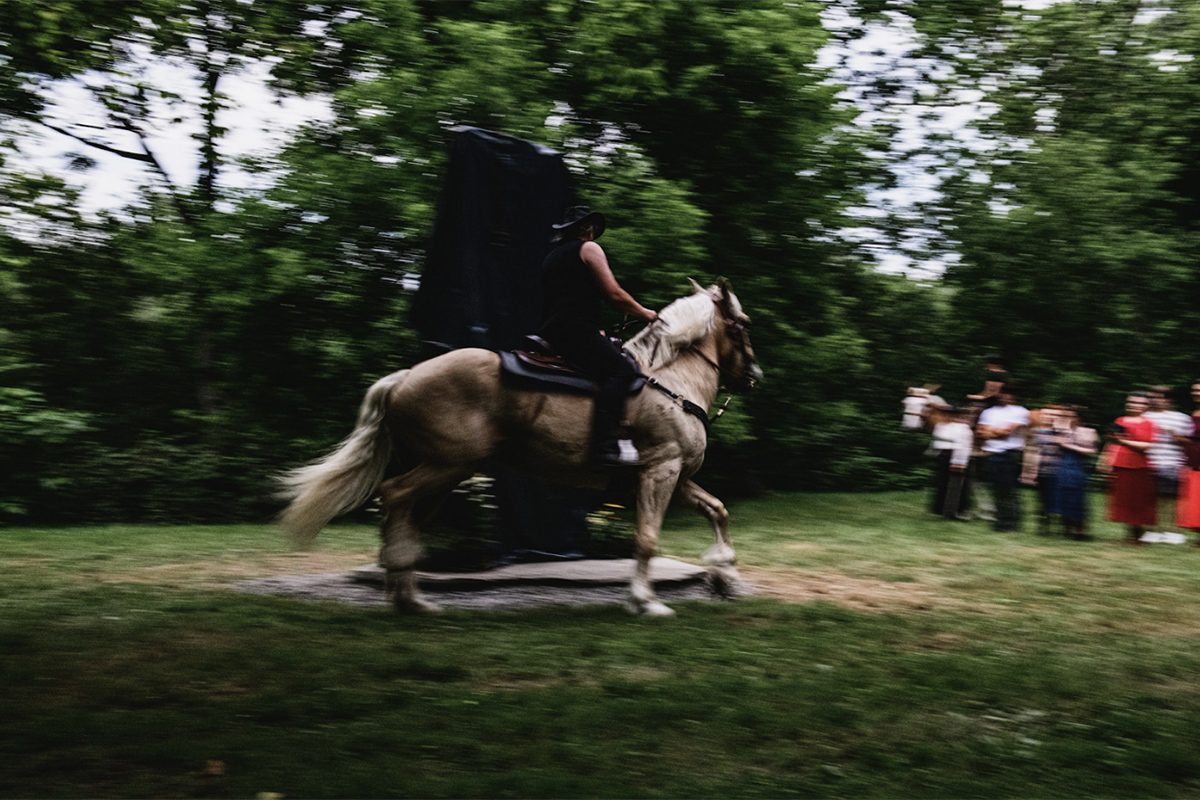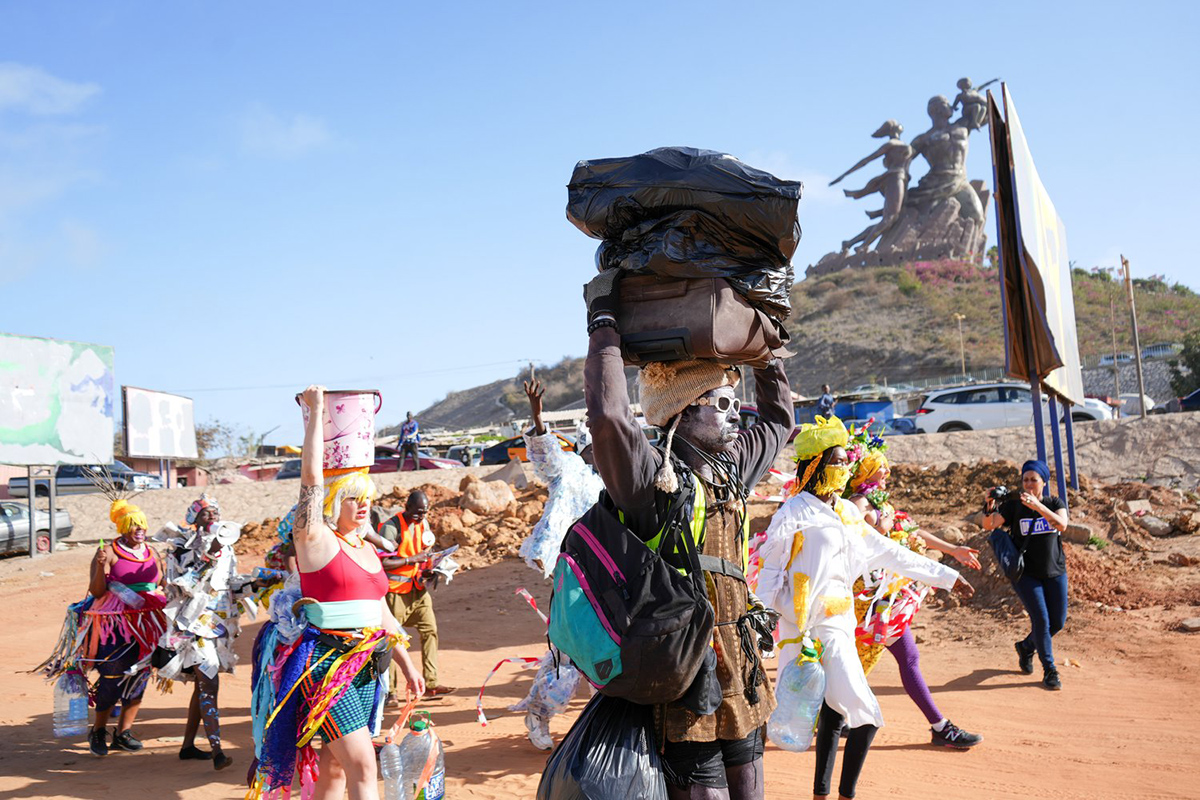Libraries designer Heidi Wiren Kebe channels unconventional skillset into transformative art

by Sarah Bender, Communication Coordinator
Associate Director of Creative Heidi Wiren Kebe is developing a reputation at Carnegie Mellon.
At the University Libraries, she’s helped establish a robust exhibition program within the Libraries and through installations across campus, bringing to life the content and context of treasures like Shakespeare’s First Folio and the Architecture Archives. With Associate Dean for Distinctive Collections Julia Corrin, she’s created displays in President Farnam Jahanian’s Mellon Conference Room in Warner Hall and at the Hillman University House. She collaborated with community organizations to shine light on history with the recent “Violins of Hope” exhibition.
She’s also traveled across the United States and internationally to develop and exhibit her own creative work, which centers the interconnectedness of power and vulnerability in both nature and her body.
Through it all, she brings an unconventional background and diverse experiences outside Carnegie Mellon into her work, elevating presentations of CMU’s history and helping redefine the role of the Libraries on campus. Across her many projects, she breathes new energy into stories and spaces across disciplines.
Evolution of Practice
Kebe went to school for this. She also didn’t.

As an undergraduate at Concordia University, she changed paths from majoring in graphic design to studio art. “It was the more difficult route, with no clear career path, but it felt like the most authentic choice for me,” she said. She then went on to receive an MA and MFA in Intermedia and Sculpture from the University of Iowa.
Yet from her first art installation in 2008, it became clear that the work required the art of transforming spaces to enhance her concept, something she couldn’t just absorb in a classroom.
“It’s hard to teach people how to think conceptually, contextually, and physically in space all at the same time. Especially in realms of more traditional design, training often doesn’t include this multifaceted way of thinking and being,” Kebe said. Instead, she evolved the unique skill set organically over time. “It requires practice, time, and being in a community — sharing space, learning from others, and not being afraid to fail.”
DOWNRIVER, 2020. Film Commissioned by the Stanley Museum of Art.
For each project Kebe undertakes, she artfully assembles this kind of community around her. Her sculpture and performance piece “Upriver,” which was exhibited in Easton, PA in 2022 and is still being transformed by Kebe today, grew from a collaboration of local artists, scholars, geologists, musicians, and engineers.
“This project started when I moved to Pittsburgh, and grew with my understanding of the city, the Appalachian Mountains, and this deep time I was now tucked within,” she said. “It was a moving experience to meet the Easton community and hear their stories — the project kept growing as it became integrated into the place and the people.”

Kebe’s community-building skills serve her work at Carnegie Mellon as well. “It’s important to keep your eyes and ears open to who has what skills and stories to tell— often who you’d least expect is the most helpful,” Kebe said. “I’m constantly surprised and amazed what people are capable of.”
Philosophy of Design
Every space is different — in context and in history — and every story has a relationship to space that must be approached in a unique way.
Sometimes, in her own conceptual practice, Kebe finds that story within. For these projects, she hunts for the right location, community, or institution to bring her vision to life. But in other cases, she works with a curator or other subject matter expert, who provides the content and the location where Kebe must communicate with the public — notably Corrin and Curator of Special Collections Sam Lemley at CMU.
“In these instances, I’m distanced from the content,” she explained. “It’s a celebration of what the curator is bringing to the table.”
Much of Kebe’s work ends up being best served by a minimalist presentation, influenced by her Bauhaus-informed design training. Instead of filling a space with superfluous stuff, she makes the decision to clear it completely — cleaning it, giving the walls a fresh coat of paint, removing unnecessary structures and decorations, and focusing on giving power to the story she’s trying to tell.
That’s especially true in the context of the Libraries, where the items Kebe highlights are often books, photos, and other small mementos of achievement or history. “There’s a lot of creative planning that goes into making a space feel full when the objects are tiny papers and ephemera,” she said. “My goal is to make the smallest object feel as large as the story it has to tell — offering me the chance to play with space in dramatic and innovative ways.”
Behind this intentional presentation lives the idea of accessibility as well. Both the University Archives and the Special Collections exist a step back from the general public — researchers or enthusiasts can make appointments to interact with collections, but the community doesn’t often experience serendipitous encounters with the materials. Through exhibitions, Kebe takes advantage of the opportunity to showcase these rare, exciting pieces of history in new ways.
“I appreciate any chance to pull art, objects, and historical context out of the places where it’s most comfortable, and insert it into the public sphere. If we hide history, we will lose it,” Kebe said. “Offering our communities access, involvement, and awareness is vital for our progress forward.”
Informed Impact
What began with a handful of volunteers and limited resources in the Libraries has grown into a respected program that continues to expand across campus, and Kebe isn’t slowing down. Today, she splits her time between Distinctive Collections and her art, including the transdisciplinary arts and social justice collective she co-founded, Propelled Animals.
SWITCH SIGNAL, 2021. Film commissioned by Kelly Strayhorn Theater. Photo by Beth Barbis.
The collective is a group of artists, dancers, scholars, musicians, and designers who embed innovative and provocative art in unconventional spaces. In the collective Kebe serves as a performance artist as well as the company’s creative director. In May, the collective took Kebe and other artists to Dakar, Senegal, where they performed in FESTIVAL INTERNATIONAL NJAFANE and in "La Ville En Mouv'ment" les Arts dans la Rue — festivals in the streets of Dakar.

Outside the collective, Kebe finds other avenues for creation. In June, she presented for LMDA (Literary Managers & Dramaturgs of the Americas) in Kansas City, and in November she will present at the Annual Meeting of the American Studies Association in Baltimore. In early 2025, she and two collaborators, Annie Hui-Hsin Hsieh and Veronica Santiago Moniello, will present “Horses and Foxes,” a 40-minute durational immersive performance in Pittsburgh. These diverse experiences continue to inform her practice at Carnegie Mellon as the impact of her work on exhibitions grows.
“As I continue to scale my professional projects, thoughtful production and collectivity is essential. I aspire to find balance in understanding the big picture and logistical execution of creative works,” Kebe said. “I feel incredibly lucky to be in a position where I can explore processes, uplift expertise, highlight unique and sometimes strange objects and histories, all while offering something meaningful to my communities.”
